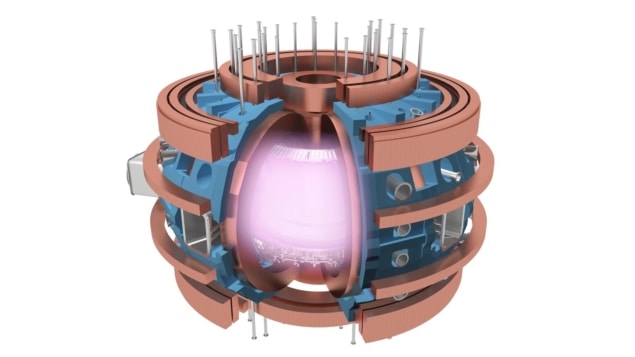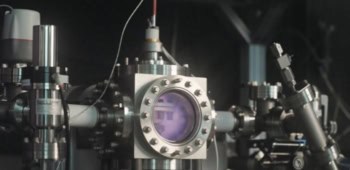
A way of controlling the size of instabilities in the plasma of fusion reactors has been discovered by an international team of researchers. Large instabilities can damage a reactor, while small instabilities could prove useful for removing waste helium from the plasma. Therefore, the discovery could provide important guidance for the operation of large-scale fusion reactors.
The fusion of hydrogen nuclei in a magnetically confined plasma could deliver vast amounts of environmentally friendly energy. However, controlling the superhot plasma remains a significant challenge.
In the doughnut-shaped tokamak reactors most widely used in current fusion experiments, plasma is confined by strong magnetic fields. This generates steep pressure gradients between the edge of the plasma and the reactor walls. If the pressure gradient at the edge is too great, it can lead to instabilities called edge localized modes (ELMs). These emit bursts of particles and energy that can cause serious damage to the reactor walls.
This latest study was led by Georg Harrer at the Technical University of Vienna. To study the conditions that create ELMs, the team carried out experiments at the ASDEX Upgrade tokamak at the Max Planck Institute for Plasma Physics in Germany.
Boosting plasma density
They found that large ELMs can be avoided by increasing the plasma density, the result being smaller ELMs that occur more frequently. As well as causing less damage, small ELMs could help remove waste helium from the plasma.

JET’s record result and the quest for fusion energy
The team also found that at high plasma densities, the emergence of ELMs can be controlled by adjusting the topology of the magnetic field lines confining the plasma. In a tokamak, these field lines wind helically around the plasma, meaning the forces they impart alternate in direction relative to the pressure gradients. In some regions of the plasma, the forces work against instability whereas in other regions the forces encourage instability. This trade-off can be characterized by an instability threshold, which defines the minimum pressure gradient needed to create ELMs.
Harrer and colleagues found that increasing the helical winding of the magnetic field boosted the instability threshold – and therefore reduced ELM production. Also, increasing the magnetic shear at the edge of the plasma led to a larger instability threshold. The magnetic shear is the angle between two crossing magnetic field lines.
Using a plasma with a large pressure gradient increases the fusion energy gain of a fusion reactor, with the trade-off being an increasing risk of ELM damage. However, small ELMs could prove useful for expelling waste helium. As a result, these phenomena must be finely balanced to optimize the operation of future fusion reactors. This latest research provides important insights into how that could be done.
The team reports its findings in Physical Review Letters.



